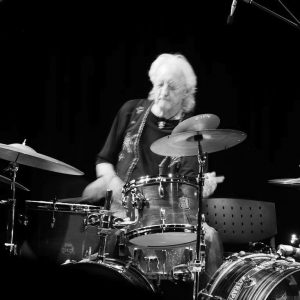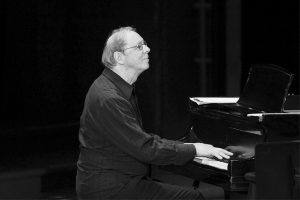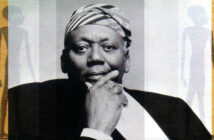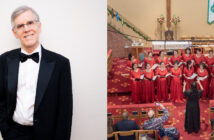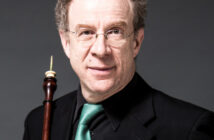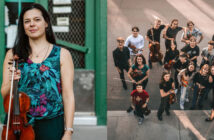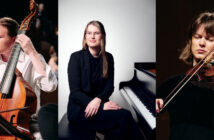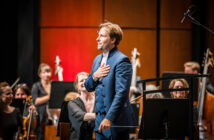
This page is also available in / Cette page est également disponible en:
![]() Francais (French)
Francais (French)
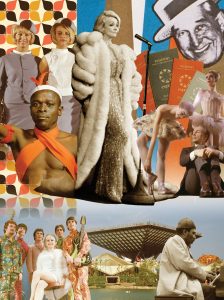 On October 29, 1967, at the closing ceremony of Montreal’s World Fair, a.k.a. Expo 67, Commissioner General Pierre Dupuy concluded his speech with these telling words: “My report is this: mission completed!” A half-century later, this assessment still stands: the event fulfilled its mission to celebrate mankind in its diversity.
On October 29, 1967, at the closing ceremony of Montreal’s World Fair, a.k.a. Expo 67, Commissioner General Pierre Dupuy concluded his speech with these telling words: “My report is this: mission completed!” A half-century later, this assessment still stands: the event fulfilled its mission to celebrate mankind in its diversity.
For 184 days, Montrealers, Quebecers, Canadians, Americans, and tourists from distant lands could visit the world in one train ride, the Expo Express, that linked one peninsula (Cité du Havre) to two islands (Sainte-Hélène and Notre-Dame). During one magical season, a little over 50 million visitors set foot on its site, miraculously built on two man-made islands in the St. Lawrence river.
Times they are a-changing
From that year on, Montreal would never be the same. Before that date, the city was hardly known outside of Canada, its only international establishment being the airport. Suddenly, in one fell swoop, 62 countries paid us a six-month visit, the stage was set for an unprecedented event and its chosen theme set the tone: Man and His World.
Nowadays, all of this is so self-evident, as if it had been cast in stone from the beginning. Yet, in 1967, none of this was obvious. Far from it. In the years preceding, the Expo moniker was questioned, likewise for its theme. For some, the name sounded more like a detergent brand; other thumbed their nose at the theme because it had nothing Canadian to it.
The Hidden Story
History is made up of many stories, the best of which become part of the record – and is history not written by the winners? as the saying goes. Yet, for one story kept, there are many discarded, some simply falling into obscurity, others cast away by design. Case in point: Expo 67.
To mark the 50th anniversary of its staging, the documentary Expo 67: Mission Impossible sheds new light by recounting the story behind the story. Released last April 26, a mere two days before the actual opening day fifty years earlier, this production unveils a host of forgotten or totally unknown facts. Co-producers Éric Ruel and Guylaine Maroist focused more on the prehistory, devoting about 50 minutes to it, reserving the last 18 minutes for the event itself and some of its aftermath.
A team of eight researches scoured, among others, the holdings of the National Archives of Canada, which, we are told, house some eighty thousand documents, a number of them uncovered for the first time. The film illuminates many of the dealings between the organizers and elected officials, media concerns and public doubts, narrowly avoided stumbling blocks that could have doomed it, but also one brilliant PR coup: inviting Americans to visit the Soviet pavilion 40 miles from their border! Also revealed are the 27 plots on the lives of foreign leaders, all of which were thwarted and hushed up.
Beyond these factoids, Expo 67 was a once-in-a-lifetime cultural showcase. The arts as mirror of mankind’s creative genius occupied a central place in its program. Its museum, a stone’s throw from the main gate (Place d’accueil), was a treasure trove of masterpieces, from Antiquity to the present day, with many a piece never having left its premises before or since.
An Artistic Splurge
Next door, the Expo Theatre filled its room with stars galore, from the then ascending tenor Luciano Pavarotti to the legendary Marlene Dietrich. Place des Arts, in the city core, welcomed everyone from the Bolshoi Opera Company to the New York Philharmonic. Jazz legends like Thelonious Monk and Duke Ellington dropped in, the latter even giving a free downtown outdoor concert at Place Ville-Marie.
As the times were changing, innovation was also the order of the day. The Youth pavilion was one such place that offered a forum for a new generation. It was there that a budding saxophonist by the name of Walter Boudreau kick-started his career.
Apart from the French pavilion (now the Casino) and the American one (converted into the Environment Museum), only a few relics remain, most weather-beaten. Even though there were a few scaled-down editions afterwards, the sense of enchantment was no longer there, save for a few remnants lingering over its amusement park, La Ronde. But that was the intention from the start: that it not be repeated so as to better engrave it our minds. Éric Ruel, who didn’t experience the event firsthand, offers some good insight for our times: “I’m convinced that Expo 67 delivers us a message now that still resounds beyond the Big Bang it once was. This message ought to inspire us to look towards the future by placing mankind and his emancipation at the center of our concerns and allow us to realize our dreams. What we can do now is to reassemble fragments left to us by history.”
Translation: Orphée Russell
» A new living memory is now online at www.expo-67.ca
» Also worth seeing in Montreal
− Fashioning Expo 67: Costume and fashion exhibit at the McCord Museum. Runs till October 23
− Expo 67: Avant-garde! (Vintage Poster Exhibit at Casa del Popolo from June 1 to 30)
Did you know that…
» Kuwait withdrew from Expo in protest of the war between Egypt and Israel.
» The Expo theme song, “Hey Friend, Say Friend,” was sung twice, a male version by Donald Lautrec, the female one by Michèle Richard. Both sang its French counterpart, “Un jour, un jour.” Composed by Stéphane Venne, the song was selected among more than 2000 entries submitted to a jury-assessed competition.
» Montreal lost its bid for the World’s Fair in 1960 to Moscow by one vote. It was awarded it two years later after the Soviet
capital bowed out.
» The most popular pavilion was the American one with over 11 million visitors.
» A time capsule was first buried on May 20, 1967, on one of the islands but relocated at the Cité du Havre in 1991. It is to be opened on that same day in 2067 by the Mayor of the city.
» Brussels needed 12 years to build its fair in 1958; Montreal did the same in less than four.
» The USSR dismantled its pavilion to turn into a university facility in Moscow. The structure now lays abandoned.
Being There: A year in the life of…
Walter Boudreau
Long before his appointment as artistic director of the Société de musique contemporaine du Québec (SMCQ) in the late 1980s, Walter Boudreau started out as a jazz saxophonist. Months shy of his twentieth birthday, he successfully landed a weekly gig at the Youth Pavilion of Expo 67, a facility set up in its amusement park La Ronde, at the tip of Île Notre-Dame. Even then, the young firebrand was a free thinker, and speaking of free, he had his ears peeled on that kind of jazz, too, Coltrane being a strong early influence.
The dream gig he landed that summer enabled him to not only play with his regular trio, but to invite whoever struck his fancy. Taking advantage of this carte blanche, he could then experiment in every possible way. In a recent phone conversation, he readily admits that that experience really triggered his vocation as a composer, allowing him to churn out a steady flow of music for constantly changing groupings of players. Because of the hectic pace he was keeping, he hardly had time to check anything else out, so he remembers very little else musically that was going on, save for one very strange sounding experimental rock group that he stopped to listen to, though he never found out who was playing.
Half a century later, Boudreau obviously acknowledges the luck he had of being there at that important juncture of time, not just for the working opportunity, but also for the broader implications of the event. “Previous to that, Quebec was living in the dark ages; we knew little of what was going on elsewhere. But when the world came to us that year, it was like one big revelation; we were discovering countries and people we were hardly aware of, or who we simply knew nothing about, and being exposed to cultures and customs that were worlds apart from our own. Everything opened up, and it all spilled over into the next decade, and the effects were far-reaching on all spheres of our daily lives, too, artistic, of course, but social and cultural as well.”
While his memories are fond, he is not at all inclined to reminisce or speak about the good ol’ days. “I can’t deny the fact I would have not become what I am now if that event had not taken place, that’s for sure, but to think it was better then, no, not really. The past doesn’t concern me anymore, I’m just too busy now, and have got so many ideas and projects in mind to keep me busy for the rest of my days.”
Yet, when asked to contrast the scene now and then, he can’t help but notice: “It’s amazing today, we have all sorts of means of communications and can be plugged into the world in an instant. Still, it seens to me that everyone is more isolated than ever, holed up in their little corner, doing their own litttle thing. I don’t feel that kind of confederacy between people that was there in the past, and it kind of worries me, but I don’t want to be pessimistic about it, I’m still an optimist at heart.”
Raôul Duguay
Few people in Quebec’s cultural landscape have achieved the status of Raôul Duguay. Among franco-phones, he’s an icon; for Anglos, his name may ring a bell, but out of province he’s pretty well unknown. An outlandish stage performer, he hit pay dirt with “La Bittt à tibi,” a song he performed as tribute to his native region of Abitibi. Over the last half century, he’s become a kind of artistic polymath who has not only published collections of verse and prose or recorded albums of original songs (blowing even some fluegelhorn) but created visual artworks and acted as a speaker/lecturer. He’s also subject of a comprehensive biography-portrait issued earlier this Spring. Now 78, and still sharp as a tack, he too, like his old friend Boudreau, was very much embroiled in the times.
“I was covering all things avant-garde for the French CBC radio arts magazine, free jazz, contemporary classical, you name it. I actually turned Walter on to Berio, Stockhausen and Xenakis. He invited me then to take part in one of his shows at the Youth Pavilion, there happened to be a poetry component in its programming. I recited my poetry with his group, played some trumpet, and we just hit it off. So much so that we became lifelong friends.”
From that encounter many others ensued, all of which lead to the creation of a joint musical venture, one unique in the annals of Quebec’s music history: l’Infonie. As outgrowth of a first large ensemble project during Expo, this multi-faceted collective came about when a first group of players around Boudreau joined forces with the QJLQ (the Quatuor du Jazz libre du Québec), the first free jazz group in the province. L’Infonie would eventually record four albums over the next five years, including its 1968 debut called Volume 3. For Duguay, this artistic foray was unparalleled.
“There were no groups like it back then,” he states emphatically. “We’d go from Bach to free jazz, prog rock and contemporary classical in any given show. Now please correct me, but I know of no others, either then or since, that had such a broad musical outlook as l’Infonie.” For him, it was this kaleidoscopic vision that made the times so exciting, something he misses nowadays, where everyone is in his own corner, working on his little thing.
Like all witnesses of that era, he is convinced that Expo 67 was a turning point in Quebec’s history. But the changes did not occur immediately, only in its aftermath, the 1970s, with a stronger affirmation of national identity and host of socially progressive measures. Yet, as great as that moment was, Duguay, like his confederate, does not wallow in nostalgia, simply because he has lots more to do and say. His most ambitious project currently is a multi-media work he calls l’Étoile. From the visual artwork he has conceived, he wants to translate it into words and sounds, the latter as a highly sophisticated orchestral score with the help of his composer friend Boudreau. But that’s a story for another day.
Guy Thouin
“You have to understand, we were outsiders back then,” drummer Guy Thouin claims during a recent phone conversation. “We were just not part of the jazz circuit, so we weren’t welcome in it.” As the last surviving founding member of the QJLQ, Thouin never really considered himself as a jazzer in the first place but learned his trade on the job, gigging in a host of musical situations. But in 1967, he teamed up with saxophonist and flutist Jean Préfontaine in a first quartet with a guitarist, who gave way to trumpeter Yves Charbonneau that summer, this change bringing about that first local free jazz group. With figureheads like Cecil Taylor and Archie Shepp, this radical new music was hotly contested at the time, and the upstart quartet was taking its cues from its exponents. In the following year, the quartet backed singer Robert Charlebois, the hot new ticket in popular music of the time, a meeting that afforded them their greatest degree of public exposure.
But the band was still in its infancy that Expo year. “I had a basement apartment downtown on Papineau street,” the drummer fondly recalls. “It was our rehearsal space. We were jamming all the time and out-of-towners would drop in, too. Noah Howard (the alto player who became known for his albums on the now legendary ESP label) was one such visitor, he even asked me to join him in New York, but I did not take him up on it. Our band really started performing during the fall of 67, first at a place called the Casa Pedro (or Espagnole), then at the Barrel, both in the downtown area.” Thouin has a strong recollection of that second place, because he witnessed the most radical player of them all, saxophonist Albert Ayler, in town with his band. “He had the most incredible sound, huge and so forceful, I had never heard anything like it before and we are all bowled over. He was like playing in front of thousands of people when there were but a handful of them in the room.”
Thouin, however, bypassed much of the social and cultural upheavals that occurred thereafter, choosing to spend most the 1970s in India, a land whose philosophies he was drawn to. Nowadays, he still plays, albeit more at home, where he currently pursues a weekly duo project with Félix-Antoine Hamel, a talented saxophonist of a younger breed – and one-time contributor to this periodical’s jazz section. Their work can be heard via weekly postings on SoundCloud, search for “From the Basement – Guy Thouin Heart Ensemble.”
When looking at today’s improvised music scene, Thouin does not envy its current practitioners. “There are so many players around, and it’s more competitive than ever. Musicians are such individualists, more so now, I think. What also strikes me is the difficulty of putting a band together and really nurturing it on an ongoing basis. Nowadays, people have to scatter themselves around just to make ends meet. It never was an easy job, even less so now.”
Pierre Leduc
In December 2016, pianist Pierre Leduc performed a trio concert in town, a rare appearance for this veteran musician, now fully retired after spending some three decades teaching at the Université de Montréal. Back in the 1950s, he was playing around professionally as a teen, eventually establishing himself as a first call accompanist for prominent soloists. In that period of the early sixties, he backed musicians of vastly different styles ranging from tenor titan Coleman Hawkins to the daring trumpeter Don Ellis. Like the preceding three witnesses, he too was kept pretty busy during that feverish year. While his memories are now a little hazy, he still recalls one occasion with trumpet superstar Freddy Hubbard and drummer Louis Hayes. “Hubbard was pretty impressed with the tenor player I was working with at the time, Brian Barley, because he nailed a rather complex chart of his right on the spot.” Now largely forgotten, Barley may well have attained greatness were it not for his premature death at age 28 in 1971, apparently felled by epilepsy, a condition he had developed after a car accident. During that Expo year, this truly gifted musician took part in a pair of recordings by Maynard Ferguson (back for a visit to his home town) but was also heard to much greater advantage on a quartet date under Leduc’s leadership, rcorded at Expo itself. All three sides were issued on the Radio Canada International label, but only the Ferguson sides found their way on CD in the 1990s on a sub-label of Justin Time records.
Leduc, for his part, was among the many guests Boudreau brought in for his weekly shows at the Youth Pavilion. They continued gigging in the ensuing months, leading to a recording date for Boudreau’s first album, and only jazz record, late in the year. (A prized collector’s item, by the way, which has never been re-released.) With the waning of the jazz scene in the ensuing years, Leduc turned to composing and arranging for popular singers and TV shows.
From the 1980s onwards, he devoted much of his energies nurturing a new generation of talent as a music educator. His experience in this field gives him a good perspective on the issue of comparing today’s talent and the scene in relation the one he grew up in. “The biggest difference between now and then are the working opportunities: there used to be so many more clubs to play in, work was steady, you could make a living at it. When I look at today’s players, I’ve been fortunate enough to work with many of them, and not all of them were my students, but André Leroux, Jean-Pierre Zanella, and Rémi Bolduc come to mind, among others. Today’s musicians have the same ambitions and passions as we, the older cats. We are truly taken by their talent. They are the leading figures of jazz in Quebec and we, in turn, are proud of them.”
This page is also available in / Cette page est également disponible en:
![]() Francais (French)
Francais (French)





